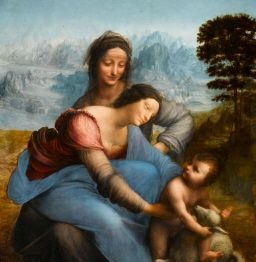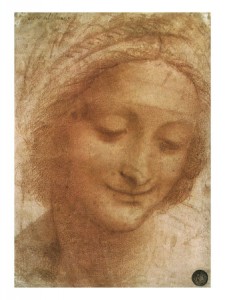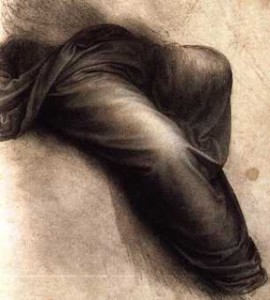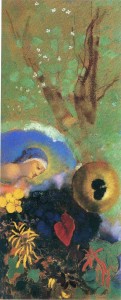Cultural Cocktail Hour
Cultural Cocktail Hour reports from Paris: Da Vinci’s Saint Anne at the Louvre
The Louvre’s Saint Anne, Leonardo da Vinci’s Ultimate Masterpiece

ending June 25th
by Leticia Marie Sanchez
For those in Paris, hie thee quickly to see Leonardo Da Vinci’s Ultimate masterpiece, Saint Anne as the temporary exhibit ends June 25.

Walking through the exhibit is akin to a stroll in Da Vinci’s workshop. An undeniable highlight of the exhibit is the abundance of sketches of the Virgin and Saint Anne that line the walls.

The drawings provide us insight in the mind of the master and the subtle conceptual shifts before he achieved his final result. The Louvre’s exhibit informs us of a Freudian psychoanalytic detail. Born out of wedlock and raised by his father’s new wife, Da Vinci experienced a childhood of two mothers, which could be subconsciously manifested through the dual mother figures of the Virgin and St. Anne
Da Vinci Code-breakers and mystery-minded souls will enjoy exploring the cryptic drawings recently discovered on the back of the painting. In 2008, Louvre curator Sylvan La Reissiere used infrared photography to reveal the presence of three drawings: a head of horse, a skull, and a child with a lamb.
Thanks to a massive 2011 Restoration (composed of an international scientific committee of sixteen specialists), the original colors of Da Vinci’s painting have been revealed, including the translucent mauve on St. Anne’s sleeve and the dazzling Lapus Lazuli of the Virgin’s mantle. After the excessive varnish was removed, one can see the delicate shades of light and dark and Da Vinci’s Sfumato technique which rendered the faces of St. Anne and the Virgin sweetly enigmatic.

Finally, the Saint Anne exhibit provides enriching context and evidence of Da Vinci’s lasting influence on the art world.
During the nineteenth century, the Louvre was a forest of easels in which painters like Edgar Degas, Odilon Redon, and Eugène Delacroix would sit with their paintbrushes, studying and copying Da Vinci’s masterpieces.
Left: Odilon Redon, Homage to Leonardo Da Vinci, 1908

One of the most delightful parallels in the comprehensive exhibit:
Bernadino Luini’s Infant Jesus with the Lamb (1500-1524)
That is one little charmer you will not want to miss.













